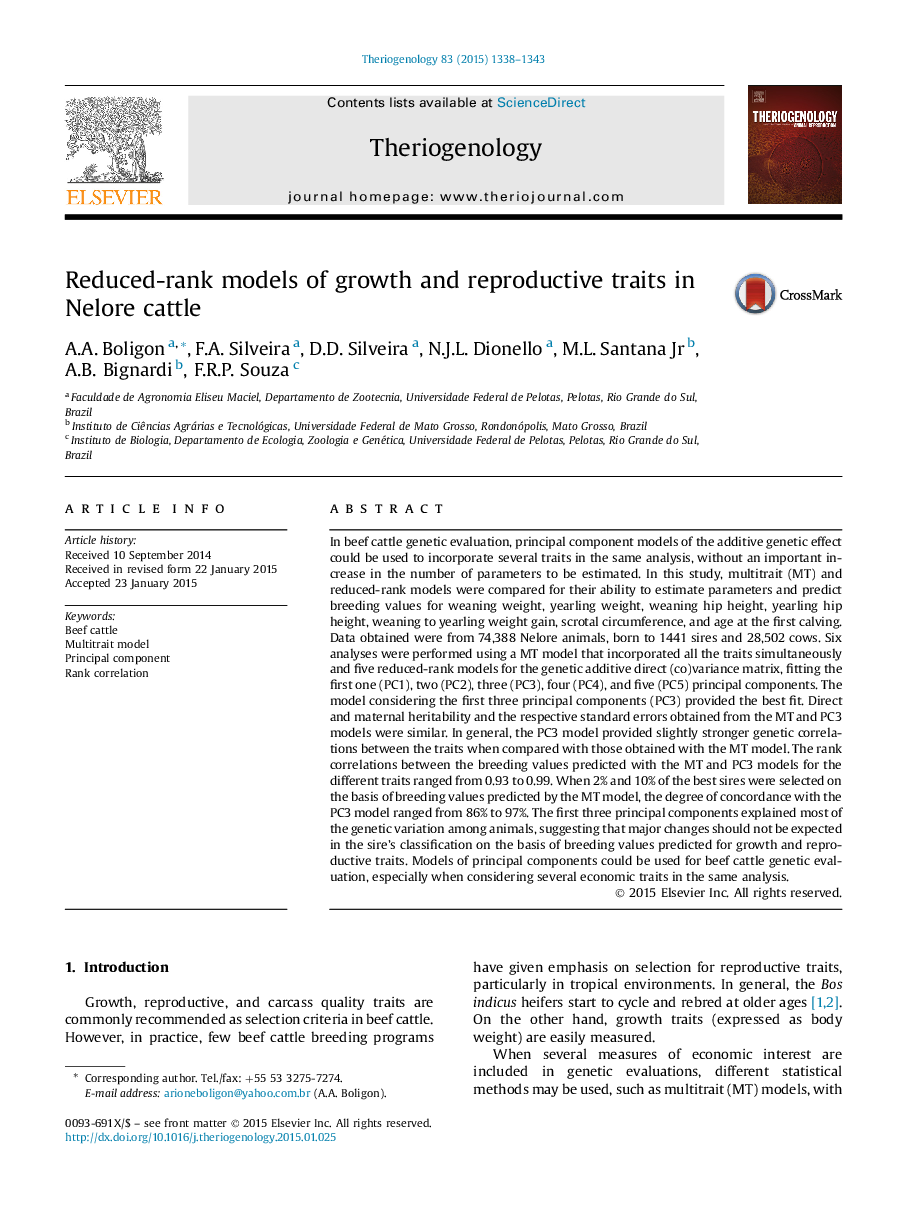| کد مقاله | کد نشریه | سال انتشار | مقاله انگلیسی | نسخه تمام متن |
|---|---|---|---|---|
| 2095171 | 1082079 | 2015 | 6 صفحه PDF | دانلود رایگان |
In beef cattle genetic evaluation, principal component models of the additive genetic effect could be used to incorporate several traits in the same analysis, without an important increase in the number of parameters to be estimated. In this study, multitrait (MT) and reduced-rank models were compared for their ability to estimate parameters and predict breeding values for weaning weight, yearling weight, weaning hip height, yearling hip height, weaning to yearling weight gain, scrotal circumference, and age at the first calving. Data obtained were from 74,388 Nelore animals, born to 1441 sires and 28,502 cows. Six analyses were performed using a MT model that incorporated all the traits simultaneously and five reduced-rank models for the genetic additive direct (co)variance matrix, fitting the first one (PC1), two (PC2), three (PC3), four (PC4), and five (PC5) principal components. The model considering the first three principal components (PC3) provided the best fit. Direct and maternal heritability and the respective standard errors obtained from the MT and PC3 models were similar. In general, the PC3 model provided slightly stronger genetic correlations between the traits when compared with those obtained with the MT model. The rank correlations between the breeding values predicted with the MT and PC3 models for the different traits ranged from 0.93 to 0.99. When 2% and 10% of the best sires were selected on the basis of breeding values predicted by the MT model, the degree of concordance with the PC3 model ranged from 86% to 97%. The first three principal components explained most of the genetic variation among animals, suggesting that major changes should not be expected in the sire's classification on the basis of breeding values predicted for growth and reproductive traits. Models of principal components could be used for beef cattle genetic evaluation, especially when considering several economic traits in the same analysis.
Journal: Theriogenology - Volume 83, Issue 8, May 2015, Pages 1338–1343
